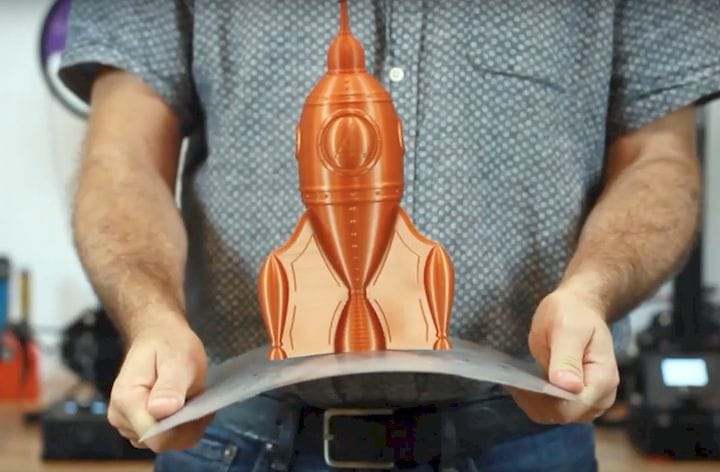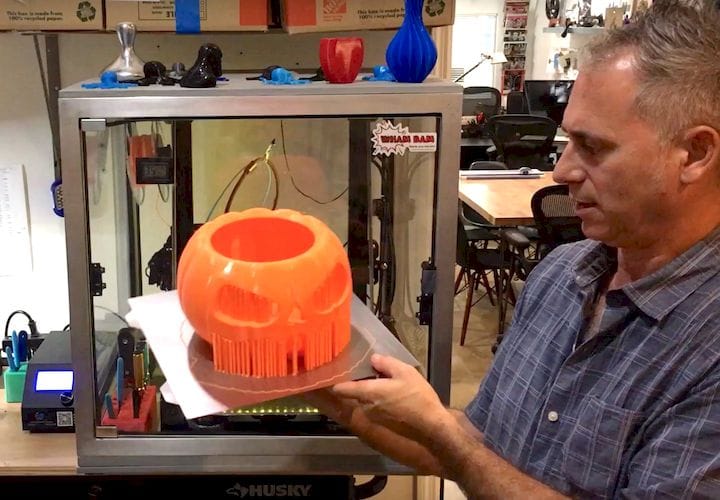![The Wham Bam bed adhesion solution for 3D printers [Source: Wham Bam]](https://fabbaloo.com/wp-content/uploads/2020/05/image-asset_img_5eb0997cd6114.jpg)
Wham Bam offers an unusual bed adhesion system that seems more capable than many alternatives.
Bed adhesion is perhaps the most critical aspect of 3D printing operations: on an extrusion-based desktop 3D printer, if your first layer does not stick to the print plate, then you’re screwed. Print failure!
Beyond that, even if the print sticks successfully, it must un-stick after the print completes. Prints that stick too much are the same amount of trouble, or even more if you cannot remove it and thus must replace the print plate.
This is the eternal paradox of extrusion-based 3D printing: you need prints to stick, and then not stick.
Over the years there have been many solutions attempted, including use of tape, glue, chemical mixes, surface coatings and more. These all work to varying degrees, but often they are quite messy and time-consuming to deal with, particularly if you are doing many prints and must re-cover the surface with tape or glue. And it’s even worse if you have to remove these solutions when they are not needed.
However, over the years a universally good solution has been discovered: a magnetically attached spring steel plate coated with PEI or similar material that allows commonly used 3D printing materials to stick. Once finished, the plate is removed (easily, because magnets) and simply twisted to pop off the print without issue.
At this stage in 3D printing technology development, it is astounding that many 3D printer manufacturers still do not offer this type of bed adhesion solution directly integrated into their machines. Nevertheless, we see many such machines on the market, equipped with glass beds with no adhesion solution at all.
That gap allows a company like Wham Bam to enter and provide a third party solution for such systems. They offer a bed adhesion solution that is quite appropriate: a magnetic pad and a flexible metal plate coated with an adhesive layer. It works very well, according to their users.
They’re not the only one offering this type of solution, but one aspect is a bit unique: one of their products uses a PEX coating instead of the more often found PEI coating.
PEX is a higher-temperature material that has an advantage over PEI in that it can work with many more typical 3D print materials easily. PEI is very good with PLA, the most commonly used desktop 3D printing material, and also works reasonably well with ABS. However, there are instances where the higher temperatures used for ABS 3D printing will slowly damage these plates.
But for other commonly used 3D printing materials beyond PLA and ABS, PEI surfaces often run into big troubles. Many a plate has been destroyed by using PETG or ASA materials, as they stick far more tightly and sometimes cannot be removed. This destroys the plate and it must be replaced.
That’s not the case with PEX, as according to Wham Bam, it works easily with: PLA, ABS, TPU, TPE, PETG and more, and it is also certified for use at bed temperatures at 130C, higher than most alternative bed adhesion systems.
If you’re unfortunately using a 3D printer with a rudimentary print plate, consider using one of Wham Bam’s kits to upgrade your device. Wham Bam offers their bed adhesion system in a wide variety of sizes to fit virtually every 3D printer.
Via Wham Bam











